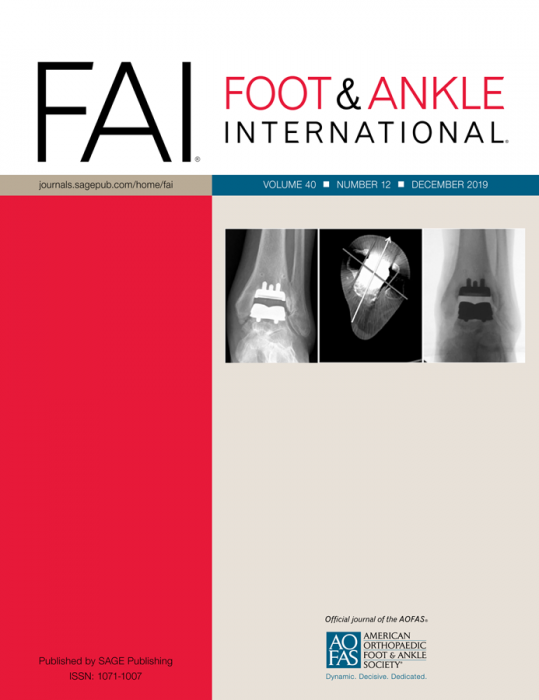
Assessing 2-week to 2-year outcome of synthetic cartilage implant versus 1st MTPJ arthrodesis

Assessing 2-week to 2-year outcome of synthetic cartilage implant versus 1st MTPJ arthrodesis
Prospective, Randomized, Multi-centered Clinical Trial Assessing Safety and Efficacy of a Synthetic Cartilage Implant Versus First Metatarsophalangeal Arthrodesis in Advanced Hallux Rigidus
Foot Ankle Int. 2016 May;37(5):457-69Did you know you're eligible to earn 0.5 CME credits for reading this report? Click Here
Synopsis
219 patients - 197 randomized and 22 nonrandomized - were included in this study comparing the outcome of treatment for hallux rigidus between a synthetic hydrogel implant (Cartiva) and 1st metatarsophalangeal joint (MTPJ) arthrodesis over a 2-year follow-up. The primary outcome was the rate of patients who attained a composite endpoint of; a minimum 30% decrease in pain on a visual analog scale (...
To view the full content, login to your account,
or start your 30-day FREE Trial today.
FREE TRIAL
LOGIN
Forgot Password?
Explore some of our unlocked ACE Reports below!

Learn about our AI Driven
High Impact Search Feature
Our AI driven High Impact metric calculates the impact an article will have by considering both the publishing journal and the content of the article itself. Built using the latest advances in natural language processing, OE High Impact predicts an article’s future number of citations better than impact factor alone.
Continue



 LOGIN
LOGIN

Join the Conversation
Please Login or Join to leave comments.